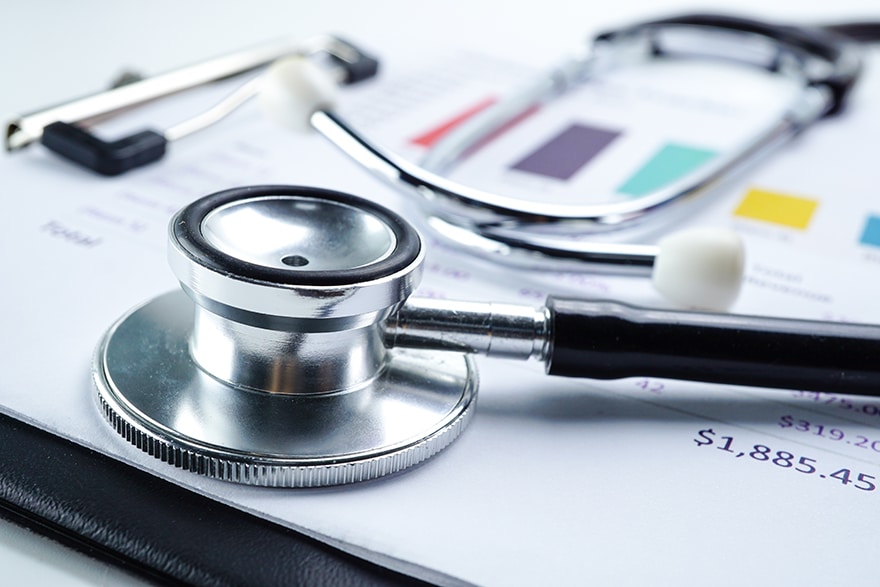At the heart of the many interconnected challenges facing ambulatory medical practices in the COVID-19 environment is the existential specter of plummeting revenue. While the driving mission of practices is to provide care for patients, the ability to continue doing so goes hand-in-hand with being a financially viable and profitable business.
While the typical citizen may figure that doctors have all the work they can handle given a national pandemic, of course we all know that just the opposite is true. For small- and medium-sized Primary Care Practices as well as Specialists, “stay-at-home” orders across various states have largely translated to “stay home and don’t go to the doctor’s office.” Thus, many channels of traditional revenue – whether office visits, elective and outpatient surgeries, or other non-COVID visits – have dried up.
The situation demands that medical practices seek, find, and create new sources of immediate revenue. For those practices willing to make a plan and follow it with rigor and tenacity, those sources of new revenue are out there waiting to be mined.
Three Key Sources of Immediate Additional Revenue
1) New revenue visit types now billable via Telehealth. For many practices, the fast and frenzied implementation of telehealth in the past couple of months was simply a critical response to the crisis. But now, telehealth can be more than a stopgap measure to reach just a few essential patients – it can be an entirely new revenue channel laden with opportunities across your patient population.
Take a close look at the very latest updated billing codes from your payers, and you will see that there are a host of services that you can now provide via telehealth – often as line-item add-ons to Annual Well Visits – that can generate six-figure increases in reimbursement revenue per clinician per year.
2) Commercial Payer short-term programs and incentives. There are two key channels of additional revenue to explore with your private payers:
One is unique new financial assistance programs quickly developed for the COVID crisis by Private Payers, such as small business loans, payment advances based on historical performance, and more.
The other Private Payer channel is taking advantage of reimbursements for Risk Adjustment and other incentive programs, for example submitting SOAP Notes whenever possible. These small tasks may seem tedious, but for 10 minutes of work, you get additional funds; and of course, those small payments quickly add up over the course of a month or a year. These programs are short-term – you have to go and find them, now!
3) Don’t overlook or dismiss your quality incentive program opportunities. In normal times, there are small opportunities for additional revenue that are understandably overlooked, or gently pushed aside over the course of a busy day. But for harvesting all the revenue possible in these difficult times, don’t overlook small items such as:
- Age-Bound measures: Once a child hits his or her 2nd birthday, you can no longer receive the same “credit” for meeting a HEDIS/quality metric on items such as childhood immunizations and lead screening. But, these are still critical items for good patient care. Similarly, immunizations for adolescents can only be billed between the child’s 9th and 13th birthdays. Delve into your patient records, and don’t miss these important health deadlines, that also serve as revenue deadlines.
- Diligently work your priority HEDIS measures and Quality Reporting: You can’t lose sight of the fact that quality scoring will impact your revenue. It’s important to stay on top of these and work them daily, either to gain bonus revenue or to meet quality metrics. Documentation is key.
- Leverage alternatives such as at-home testing kits: Of course we know that telehealth is the major way to overcome our stay-at-home world, but don’t forget other alternatives, such as prescribing home testing products like colon cancer screening kits when appropriate.
Design a New Revenue Plan and Stick With It Rigorously
Right now, it’s all about your plan – your mindset and actions must be very strategic, very adaptive, and very administrative, with ongoing discipline. Some critical Best Practices:
1:1 Outreach phone calling to patients is key. It’s absolutely imperative that your #1 strategy is outreach telephone calls by your staff. It’s no longer enough to depend on reminder cards, or patients thinking to themselves it’s time for an Annual Well Visit, or even chronically-ill patients to diligently stick with their recommended care schedule. People are home and paying close attention to their phones for important updates – their health should be included in this.
“All Hands on Deck.” The current situation calls for more than just your Scheduler doing these outbound calls. Receptionists, Billers/Coders, even some clinicians need to be a part of the collective effort, depending on your current office volume and practice culture.
Morning huddles, afternoon accountability. Any New Revenue plan will fail if it’s not executed consistently over time with commitment and vigor. A daily “morning huddle” has become a key best practice for many practice tasks, and 1:1 outreach telephone calling should be part of that daily huddle conversation – as it is now a key metric for your success and viability. Review with your staff each morning who will be making calls, how many calls each will make, and what the target numbers are for booking appointments. Then, in mid-afternoon, walk the office and check on progress with the outbound call target numbers, so there is still time in the workday to meet the metric goals. Everyone should be invested in this process.
Indeed, there are a lot of nuts-and-bolts, roll-up-your-sleeves aspects to finding and claiming new sources of revenue that may not be the typical mindset of a practice in better times, but as has been said, extraordinary times call for extraordinary measures.
Medical Advantage can help you design a New Revenue Plan tailored to your practice, as well as help you implement it with optimized workflow, staffing, technology, RCM, and other elements. Further, we can help you build out your telehealth platform and capabilities to take full advantage of not only the immediate new revenue opportunities discussed above, but for success in the new “Hybrid” in-person/telehealthcare delivery model rapidly emerging for the future.





